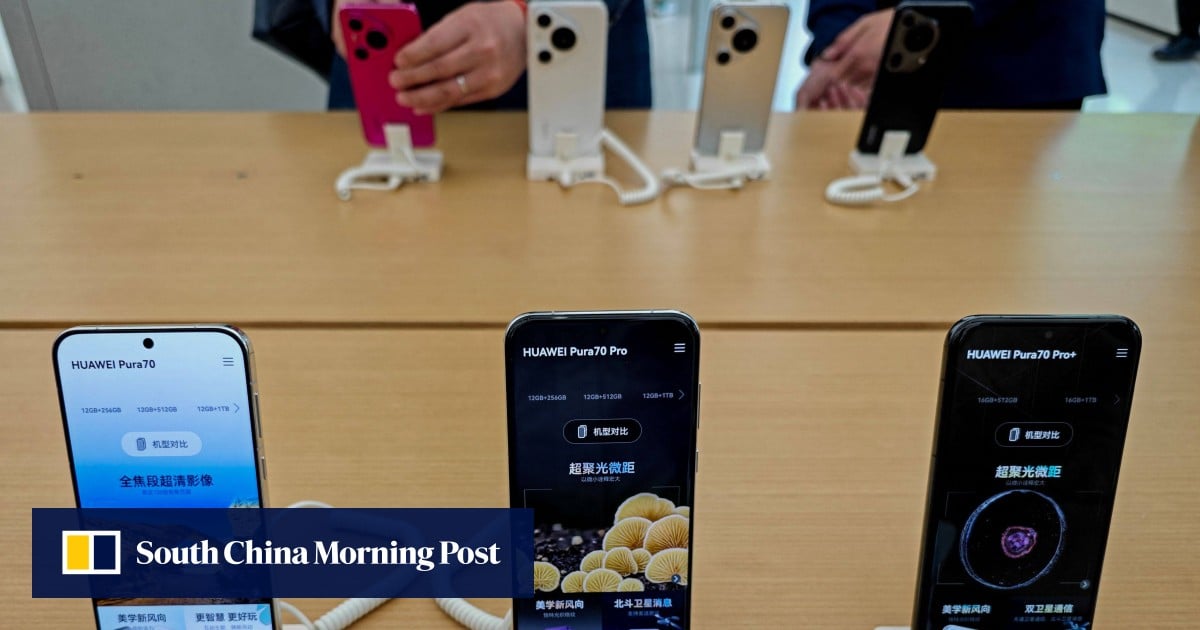


Huawei Technologies’ new Pura 70 smartphones, powered by a chip designed by its in-house fabless semiconductor unit HiSilicon, are set to help the Shenzhen-based tech champion regain the top position in China’s smartphone market at the expense of Apple.
The Pura 70’s system-on-a-chip (SOC) – an integrated circuit that combines all the necessary components on one piece of silicon – was identified as the Kirin 9010 processor manufactured by China’s top foundry Semiconductor Manufacturing International Corp (SMIC), using its 7-nanometre N+2 node, the same process used to make the Kirin 9000s for Huawei’s Mate 60 Pro line, according to Dan Hutcheson, vice-chairman of US-based IC research company TechInsights.
TechInsights also found that markings on the processor package are “technically new but remarkably similar” to HiSilicon’s Kirin 9000s in a recent teardown analysis of the Pura 70 Ultra which was launched earlier this month.
However, Hutcheson believes the 9010 is “slightly better” than the 9000s in terms of overall performance despite the fact that they are made using the same SMIC process.
China’s Henan province sees drop in smartphone exports amid supply chain changes
The new phone is a sign that Huawei could have solved more bottlenecks in its semiconductor supply as the company has turned to local partners for replacement of imported chips. Huawei has doubled down on building a full-stack ecosystem on several business fronts, from smartphones and AI computing to EV automobile solutions, which all require large quantities of module hardware and chips.
“Huawei has totally broken free from US sanctions in China’s markets,” Hutcheson said. “But it’s still being held back by US sanctions in world markets.”
Huawei is expected to ship over 50 million handsets in China this year, putting it back in the top spot with a 19 per cent market share, up from 12 per cent in 2023, TechInsights data showed. The resilience in China will help Huawei become the eighth largest smartphone vendor worldwide with a 5 per cent market share despite the Pura 70 line likely to be unavailable in overseas markets.
SMIC and Huawei did not immediately respond to requests for comment sent outside business hours on Sunday.
As with the Mate 60 Pro line, Huawei has been tight-lipped about the Pura 70’s SOC, in regard to its suppliers, manufacturers and design specifications. The Mate 60 Pro 7-nm chip has put the US government at unease and triggered more threats of scrutiny from Washington.
The situation could be the same for Huawei with the Pura 70 series. “Huawei’s semiconductor supply challenges are lack of advanced node density, power, performance, and cost,” according to Hutcheson.